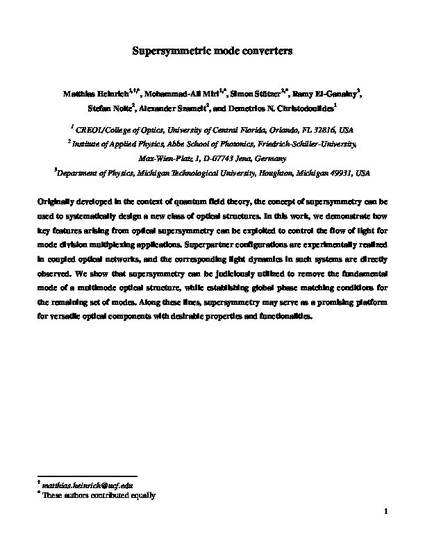
Originally developed in the context of quantum field theory, the concept of supersymmetry can be used to systematically design a new class of optical structures. In this work, we demonstrate how key features arising from optical supersymmetry can be exploited to control the flow of light for mode division multiplexing applications. Superpartner configurations are experimentally realized in coupled optical networks, and the corresponding light dynamics in such systems are directly observed. We show that supersymmetry can be judiciously utilized to remove the fundamental mode of a multimode optical structure, while establishing global phase matching conditions for the remaining set of modes. Along these lines, supersymmetry may serve as a promising platform for versatile optical components with desirable properties and functionalities.

© 2014 Nature Publishing Group: Nature Communications. Deposited here in compliance with publisher policies. Publisher's version of record: http://dx.doi.org/10.1038/ncomms4698